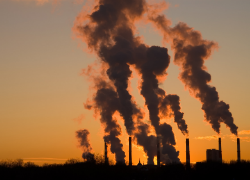This July, Australia abandoned its plans to implement a carbon tax. Prime Minister Kevin Rudd stated that the reason was to reduce the burden on consumers and small businesses. This news would seem to suggest that Australia wanted to avoid the repercussions of reducing carbon dioxide emissions; however, the tax was instead replaced by a market-based trading system (cap and trade) a full year ahead of schedule. Prime Minister Rudd called combating climate change “the greatest moral challenge of our time.” Australia’s scheme is just one example of the growing movement towards a global carbon market. While the Kyoto Protocol provided a framework for carbon trading, many regional systems have emerged in recent years. The success of these markets has varied, and creating a unified global market represents a huge potential both in economic and environmental terms.

Both a carbon tax and carbon trading scheme create incentives to reduce CO2 emissions. A carbon market differs from a tax in that there are a limited number of credits or allowances for CO2 emissions and the market determines the cost thereof. A fundamental feature is that an overall reduction target limits the total amount of permitted emission. The Kyoto Protocol included the basis for a trading scheme to allow countries a mechanism to meet their obligations under the treaty. It has been largely ineffective due to the surplus of credits available as well as the U.S. not participating, Japan withdrawing, and China’s exemption. One of the most prominent carbon markets in the world is the E.U. Emissions Trading Scheme, which also suffers from an abundance of carbon allowances. A coordinated, global effort is needed to address the economics of carbon emissions.
Excess carbon dioxide in the atmosphere can disrupt the carbon cycle for between 500 and 1000 years if left to natural processes. Because every region of the world contributes to CO2 emission, and once in the atmosphere, CO2 pollution from one region is indistinguishable from another, and because the impact is so far removed in time from the source of emission, it is entirely impossible for the free market to curb CO2 emissions without a cost imposed on such emission. A carbon market may provide incentives to reduce emission commensurate with the ambitiousness of overall carbon reduction, but it does not provide an accurate price for removing existing CO2 from the atmosphere. Carbon removal technologies are an assumption built-into many climate models which project that they are crucial to remaining below the 2°C threshold identified by the Intergovernmental Panel on Climate Change (IPCC). Atmospheric carbon removal will need financial backing and a profit-motive if they are to be viable.
Several technologies show potential in reducing atmospheric CO2. Direct carbon capture from the flue of sources like power plants is available but expensive with a high parasitic energy level. Alternatives are gaining ground: a combined CO2, SO2, NOx system with a net carbon reduction now exists for ships, artificial trees are currently being tested and scaled to larger sizes, while afforestation and biochar uses vegetation to disrupt the carbon cycle. Converting CO2 to calcium carbonate is also a potential method of sequestering CO2 rather than pumping it back into wells for enhanced oil recovery. New technology for cement production makes efficient use of such calcium carbonate (in addition to avoiding CO2 emission typical of ordinary cement production).
President Obama recently outlined his plan for combating climate change, and creating a viable carbon market through tax or other means that would recognize the long-term impact and costs of CO2 pollution and create opportunity for innovation and job growth, not to mention make alternative energy more appealing financially. Several Republican former administrators of the Environmental Protection Agency just endorsed such approach in an op-ed to the New York Times. Although CO2 pollution is a global issue that needs to be addressed at the international level accordingly, the initiative can begin domestically.
Alex Milgroom is a 3L at the University of Denver and the Online Editor-in-Chief of the Denver Journal of International Law and Policy.

